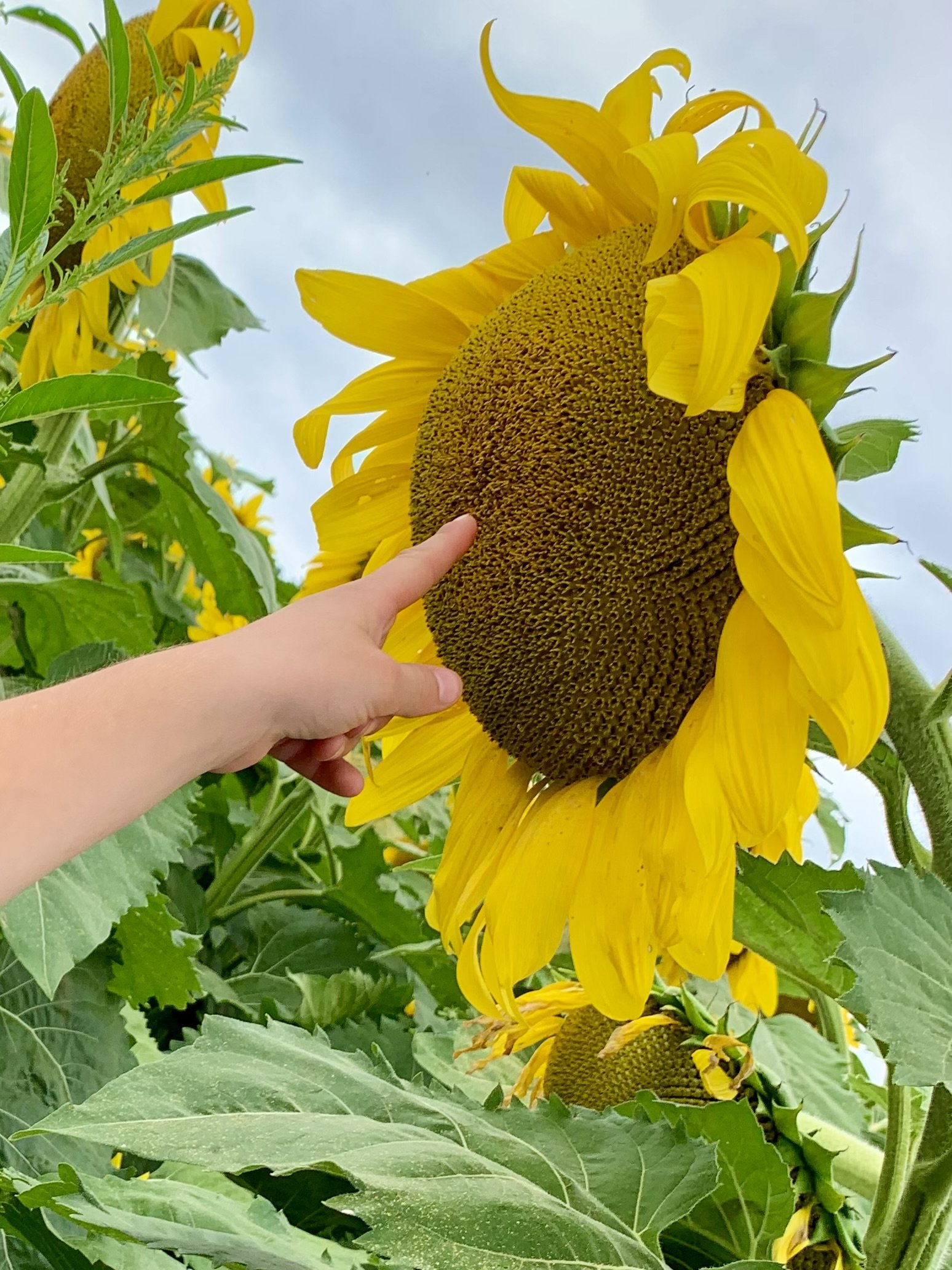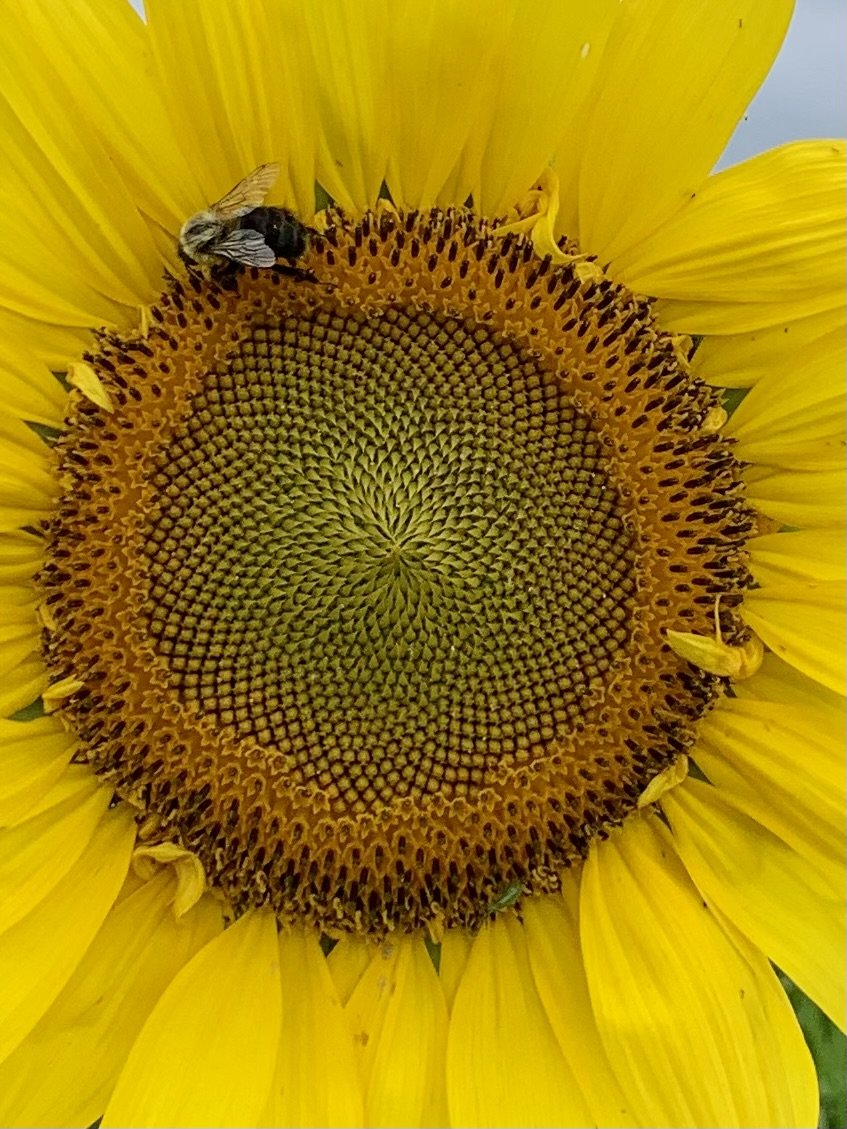Sunflower Fun
“When we drive to school in the morning the sunflowers are facing one way and when we drive home after school they are facing the other way, because they always want to see where I am going!” brags Melania to anyone who is listening.
“That’s not true…” grumbles Roberta who obviously is not used to getting moving this early in the day.
“Yes, it is! It really is true! Ask my dad!”
A recent early morning field trip to the sunflower farm, would set the stage for a morning of STEM learning but, it’s going to be a long Thursday at this rate. I immediately reach into my bag to find the Sun Butter Energy Bars I packed, hoping to shift the energy and mood of the morning.
“Actually, it is true, I explain as I hand Roberta and the gang a granola bar. “Sunflowers are named for the way they turn their blooms to follow the sun. As a sunflower grows it’s face follows the sun from sunrise to sunset every day until it’s done growing. So, the sunflower does change directions from when Melania sees it in the morning and when she sees it later in the afternoon ”
“Look how tall they are! They are even taller than the adults!” marvels Lauren, who thankfully keeps the conversation focused on sunflowers. Using words like big, bigger, biggest, small, smaller, smallest, tall, and wide make this a great language activity as well.
“Can I touch one? It’s bumpy…wait, inside the middle, are those all little tiny sunflowers? Look! There are a million little tiny flowers inside the big flower head!”
Maybe not a million, but this is a great opportunity for talking about quantity and estimating. In fact, one of the best places to strengthen math skills is in the garden! Whether you bring flowers into your classroom, have a school garden or take a field trip to the sunflower farm or pumpkin patch, this is a great opportunity for children to practice their early math skills. When children observe, measure, compare and analyze their surroundings, it helps them make sense of their world.
“Look how big this one is!”
We decided to get out the tape measurer and measure its height. We discuss how we want measure an object and which end to start with. This led to a great introduction to the concept of diameter and circumference. Of course these concepts are too advanced for this group at this time, but this is a perfect example of “planting the seed” to new vocabulary and math foundations. (I couldn’t resist!)
As we wander through the acres of sunflowers, I like to prompt conversations that begin with, “I wonder…” to encourage the children to have curiosity about the farm and math in general. “I wonder how many seeds they planted?” “I wonder how tall the sunflowers get?” “I wonder if how those mini flowers turn to seeds?” My goal is for the children to start asking these questions on their own and for their creative juices to start flowing on the answers to my thoughts.
“I wonder how many times people get stung by all these bees?” grumps Roberta.
“There are a lot of bees! But they aren’t bothering us. They are so busy eating nectar they don’t even know we are here”! Shares our own little Pollyanna, who refuses to join Roberta’s grumpy morning.
“Look this one has three bees on it! Look, Roberta! Let’s see if we can find more!”
When children are learning to count, they love counting anything! Regardless on the type of flowers you have access to, children can compare sizes of plants, leaves, fruits, vegetables or flowers. Observing, measuring, comparing and analyzing the things around us helps young children make sense of their world. Using gardens to teach math makes it more engaging to kids and provides unique opportunities to show children how we use math in our daily lives.
Children can compare sizes of plants, fruits, vegetables or flowers while playing in the garden. Arranging vegetables, fruits or flowers in order from smallest to biggest or biggest to smallest is a great activity that leads to all sorts of other conversations. Modeling words like big, bigger, biggest, small, smaller, smallest, tall, and wide made this a great language activity as well.
Our morning at the farm brought us a morning of math filled conversations. From the shapes that make up the sunflower, to counting bees and measuring stalks, math concepts come to life when we take the time to look for it in our everyday encounters. Take the time to head outdoors and see where your garden takes the learning! Happy Summer!







